
|
| Accept Cookies | Customize | Refuse Cookies |
0maxx0 www.juzaphoto.com/p/0maxx0  |
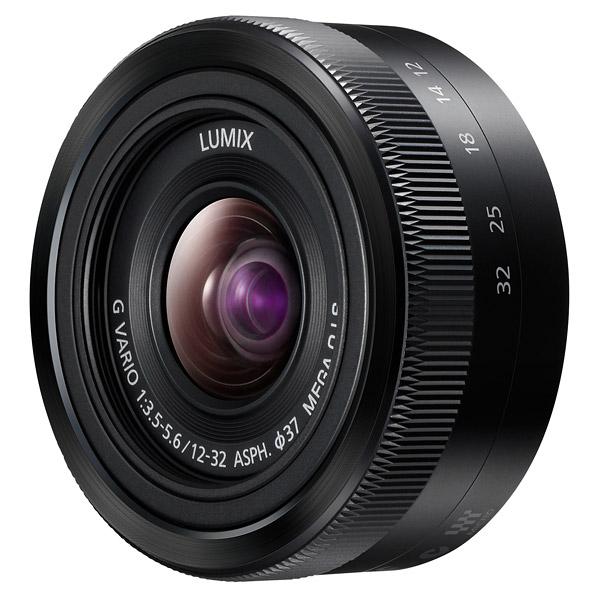 | Panasonic Lumix G Vario 12-32mm f/3.5-5.6 OIS Pros: Cheap, very compact (when closed), fairly wide focal range starting from 12mm, stabilized, fast AF Cons: Plasticotto and darkness Opinion: Lens that costs very little, has a fast AF, is quite sharp and is small and light almost like the microscopic 14mm, but in addition it is stabilized and is obviously more versatile. On the other hand, it is decidedly dark on the telephoto side and, as I have already written in the review of the 12-60mm, I think f/5.6 maximum aperture for a lens that is too dark on m4/3...but in this case the essential requirement was absolute portability and this pancake together with the Gx85 has fully satisfied it. sent on May 20, 2025 |
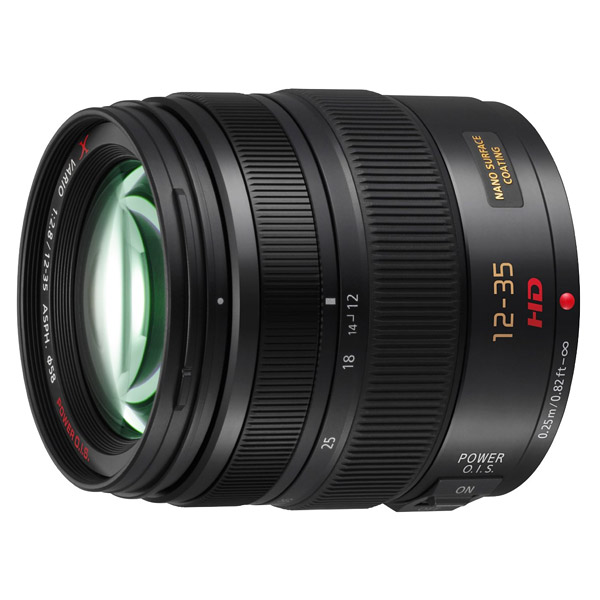 | Panasonic Lumix G X 12-35mm f/2.8 Pros: Good focal range, stabilization (double stabilization if supported by the camera body), constant f/2.8, sharp at any aperture, quite compact and light Cons: in general price, poor flare resistance Opinion: I come from the Panasonic 12-60mm f/3.5-5.6, a cheap lens but well built, stabilized, very light and with a fabulous focal range (24-120mm "FF equivalent"), but too dark for my uses... f/5.6 on the telephoto side forced me too often to raise the ISO to values unusable by my Gx85 and G85. This 12-35mm has a less exciting focal range, but it makes up for it with the constant f/2.8 aperture, the excellent construction and a very homogeneous rendering at the various apertures at all focal lengths. Its main competitor, the Olympus 12-40mm, according to online reviews is optically better, but also longer and "significantly" heavier (while remaining far from the weights of equivalent zooms for larger sensors, let's be clear), as well as not stabilized. The only major flaw of this lens is the price... And in fact I only grabbed it for an exceptional offer from a well-known shop in Reggio Emilia. sent on April 09, 2025 |
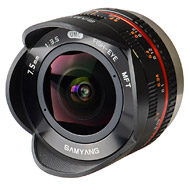 | Samyang 7.5mm f/3.5 UMC Fisheye MFT Pros: very high value for money, very light and compact... Cons: ... perhaps too compact! Opinion: Fullframe fisheye (or diagonal if you prefer) very light and so compact that it is difficult to rotate one of the two rings (aperture and focus distance) without turning the other as well. Very sharp even at full aperture, at f/4 and f/5.6 it reaches maximum performance in the frame center and edges respectively. Fully manual, without electrical contacts. "Thanks" to the M4/3 sensor goes into hyperfocal immediately, even with aperture wide open and infinity focus everything is in focus from half a meter of distance forward. used is around 150 euros, for this price I consider it an excellent low-cost entry into the UW world for the format. I use it both "au naturel" and defished with Panini projection. I agree with those who wrote before me that the hooking of the cap is not particularly safe, the fault of the fixed petal lens hood. sent on March 01, 2025 |
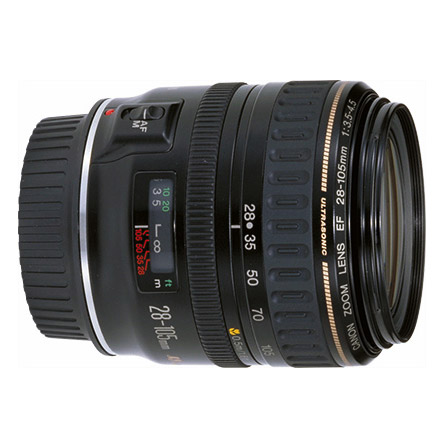 | Canon EF 28-105mm f/3.5-4.5 USM Pros: Light, compact, found at very low prices, "almost" fixed f/4, USM Cons: Discontinued for many years, soft to TA, 28mm start, non-stabilized Opinion: Taken out of curiosity (or for a headshot?) to use on R6, tired of the weight and bulk of the excellent Sigma 24-105mm Art. I'm satisfied with it (very much, if compared to the price): it's small and light, the af is fast and quiet thanks to the USM motor, at ta it's soft but already used as a constant f/5 things improve, especially on the wide side. It's not stabilized - on a body with IBIS it's not a problem (in fact, it's even lighter this way). I took it already having clear that I will always and only shoot RAW to be developed with denoise and sharpen AI, which really give new life to obsolete projects like this. It has been out of production for a quarter of a century... but for the money it costs (it is easily between 100 and 150 euros), in my opinion you can think about it. sent on October 01, 2024 |
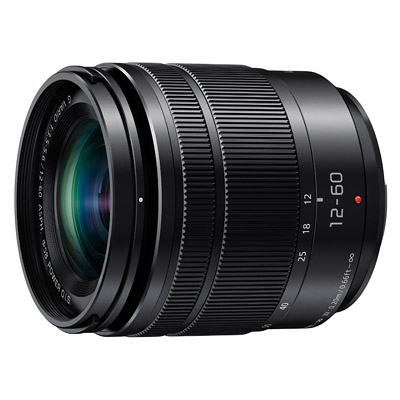 | Panasonic Lumix G Vario 12-60mm f/3.5-5.6 OIS Pros: weight, size, price, (double) stabilization, perfect focal range Cons: Given the price, none. Opinion: Let's start from the bottom: it's not a bright optic, period. For the rest, only merits: it is small and very light, plasticky but well built and tropicalized, it covers a fabulous focal range (24-120mm eq.), it focuses very close and has stabilization, which on compatible Panasonic bodies becomes double. Generally good resolution (better wide side). sent on April 20, 2024 |
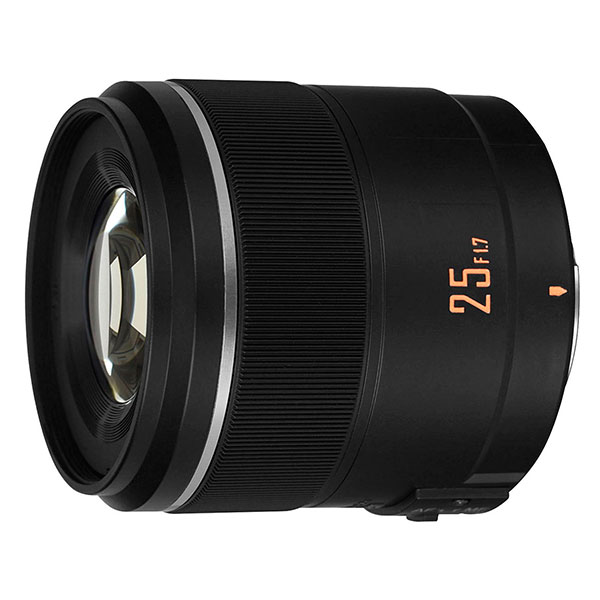 | Yongnuo 25mm f/1.7 MFT Pros: price, very sharp from f/2.8, completely silent AF, nice blur Cons: Cost-effective materials Opinion: A cheap alternative to the Panasonic 25mm, to which it is at least aesthetically clearly inspired. I didn't find any big flaws, but if you want to go into detail, from home tests, the lens is quite soft (but usable) at TA, improves at f/2 and reaches an excellent sharpness at f/2.8. Peak between f/4 and f/5.6, but with differences in my opinion visible only at 100% zoom screen. The same goes for vignetting. The STM motor isn't lightning fast, but it's completely silent. The blur is nice. The change in aperture of the aperture in M is quite noisy. In A or if you use a flash, on the other hand, no noise... mystery of faith. Decent finishes but materials that certainly don't give the idea of luxury, even if the attachment is still made of metal. At this price (120 euros new) this lens serves as a forklift and/or battle lens, and it succeeds perfectly. Update: on G85 when this lens is mounted you can't use the electronic first curtain... No problem with mechanical or electronic shutter. Another note, the lens is not present in the Dxo database, so those who use PhotoLab or PureRaw cannot take advantage of the excellent corrections of these sw. sent on November 13, 2023 |
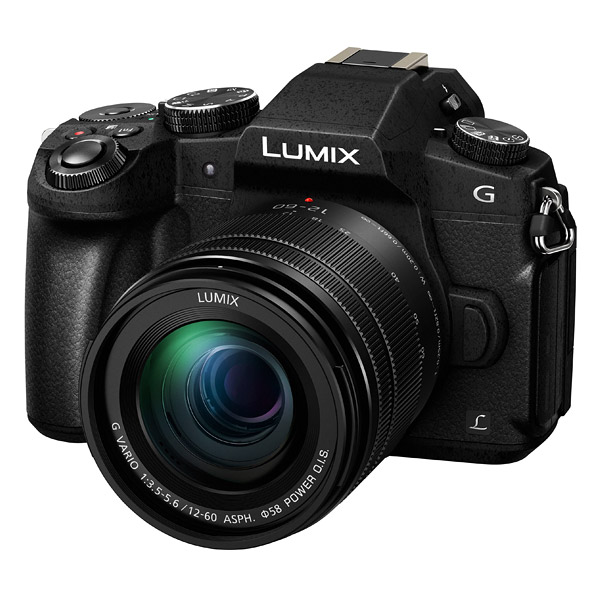 | Panasonic G80 / G81 / G85 Pros: Compact, excellent ergonomics, fast (not very precise) contrast AF, stabilized sensor, battery and SD in separate compartments, incredible price on used Cons: Built-in flash not usable bounce, some buttons awkward because they are soft and flush with the body, AF unsuitable for fast-moving subjects, battery life Opinion: A Gx80 in a slightly larger reflex-like body, therefore with better ergonomics. Even when you shoot, it proves to be more responsive. Very good screen (bright even in the sun, very smooth, perfect touch), although unfortunately for me flipping on two axes (I prefer tilt only) the construction seems quite sturdy and the hinge is larger than what is found, for example, on Canon bodies. Lots of physical and non-physical controls, several customizable, large and very soft dials. Curiously, the buttons on the back are great on the Gx80 and awkward here (too soft and not very protruding). The battery lasts longer than its smaller sister but remains scarce, and the viewfinder is larger and more comfortable. It's a pity that the built-in flash is not flip-up (and therefore usable by bouncing off the ceiling) as in the Gx80, but it is the usual reflex-like useless for me. Customizable AF but still unable to keep up with fast-moving subjects. Unlike its little sister, there is no shutter lag... Or at least I don't perceive any. The great touch helps to move the focus point quickly and accurately. With static subjects as usual the micro 4/3 is exceptional, thanks to the bright lenses and the large pdc that combined with the exceptional stabilization (with the 45mm I have handheld shots of 1 second in focus) allow you to keep the iso always quite low, in the useful range of the "small" sensor. Given the price at which it is used, it is recommended especially for those who want to contain weight and size without sacrificing ease of use and quality. sent on July 18, 2023 |
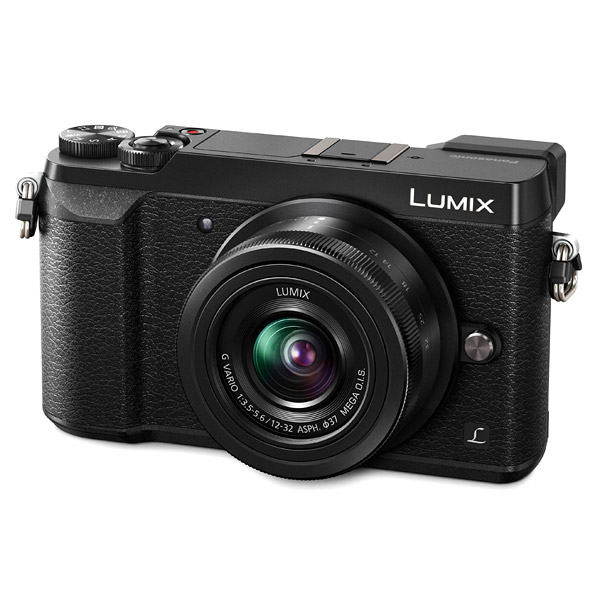 | Panasonic GX80 / GX85 Pros: Compact, very good construction, great layout and good ergonomics despite the compactness, stabilized sensor, fast (not -issimo) and accurate contrast AF Cons: battery life, otherwise it is a compact body with an M4/3 sensor: if you accept the consequences of these two features, for me it has no relevant defects. Opinion: Extremely compact body but excellently made and assembled: heavy, no creaking, many controls and all in the right place, with several customizable buttons, both physical and on screen. Screen that is very smooth, quite defined and bright even under the sun. It's flip-up, for me a great advantage compared to articulated screens: the construction is more robust and allows you to shoot in a cockpit, fantastic - inconvenient for selfies and movies, but it's not my field of use. The viewfinder, small but not too much, is particularly criticized, but considering that it is a body intended for a relatively "quiet" use (the contrast AF is performing, but not suitable for fast-moving subjects, and there is a fairly evident shutter lag) for me it is fine, I can use it without problems despite the glasses. The stabilization of the sensor is excellent, even with 45mm I can use incredibly long shutter speeds. For the rest... it's a very compact body, so it lacks a deep grip and I find that its ideal use is with the extraordinary compact fixed dedicated to the M4/3, with long and heavy lenses it would probably be uncomfortable. For me passed with flying colors, found on the second-hand for 250€ in the shop and using it was love at first sight... Compared to larger formats, the sensor has strengths and weaknesses, but bodies like this are great for maximizing the former. Recommended. sent on July 18, 2023 |
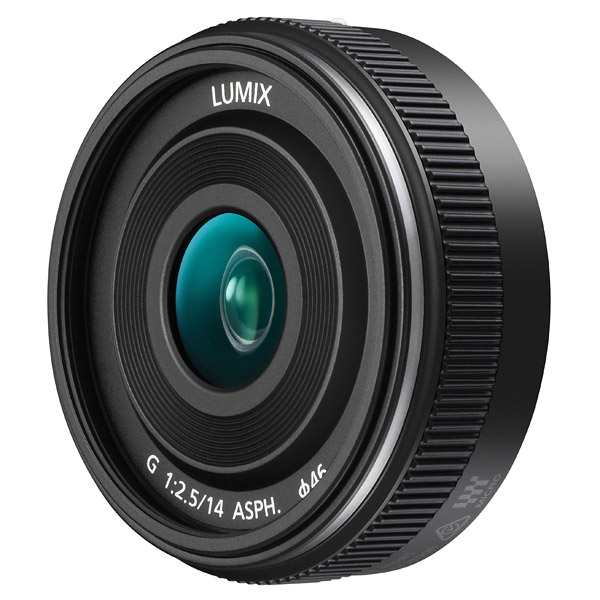 | Panasonic Lumix G 14mm F2.5 II ASPH Pros: Compact and lightweight, crisp Cons: Not exceptionally bright? Opinion: I have already written everything in the pros and cons: the lens looks like a toy, very small and light, but well made and despite the plastic does not give a feeling of construction to saving. Focus quite fast (focal length) and internal. The brightness is not incredible, but for what it costs (220 euros new on Amazon, to date) you can not really complain. Excellent sharpness, perhaps at full opening loses detail at the edges. I always thought that the most versatile focal length for fixed lens was the 35-40mm (FF equivalent I mean), this gem made me discover the 28mm. Together with the Zuiko 45mm it forms a minimalist kit of very high quality and ridiculous weight and compactness (in a good way!) for those like me who come from full frame. sent on June 25, 2023 |
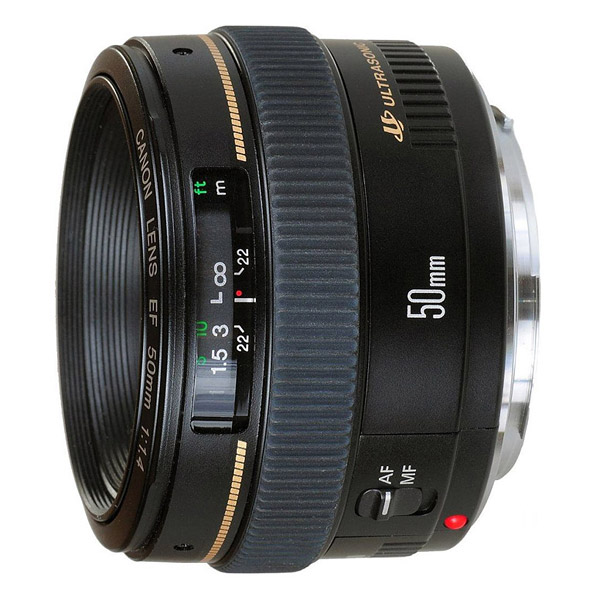 | Canon EF 50mm f/1.4 USM Pros: Compact, lightweight, relatively cheap, very sharp from f/2.8, blurred better than 50mm f/1.8, USM engine Cons: soft and vignette quite a lot at TA Opinion: Premise: bought used for less than 200 €, 2017 specimen, used only on R6. The lens is in a nutshell an enhanced version of the 50mm f / 1.8 STM: very comfortable on the go because it is light and compact, it is 2/3 stop brighter than the "little brother", with which it shares the sharpness compared to the aperture (soft to TA, splits the hair from f / 2.8), has a more pleasant blur. For me it remains usable safely even at full aperture, perhaps because on ML the autofocus is much more reliable than on SLR (on R6 I do not see all the problems described in other reviews). A TA vignette a lot; the micro-USM motor, while not as powerful as a USM ring, is better than the STM (faster and much less noisy) and less difficult to follow moving subjects. Taking into account all these characteristics I recommend it; if you want perfection and sharpness to TA with the same brightness you have to look elsewhere, certainly with very different prices-weights-dimensions. sent on March 13, 2023 |
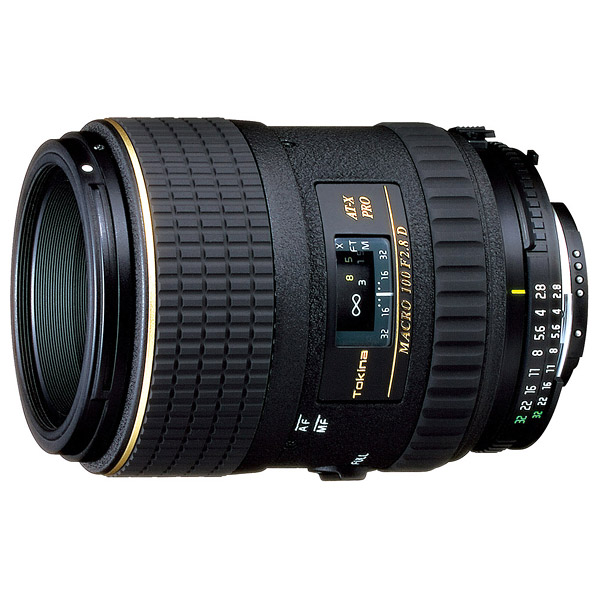 | Tokina AT-X Pro 100mm f/2.8 Macro Pros: Solid construction, macro 1:1, sharp, present af limiter, pleasant blur, low price, hood with anti-reflective fabric, compact and lightweight Cons: unstabilized, slow and noisy af engine, on Canon R6 continuous af does not work properly Opinion: Fantastic lens: very sharp, excellent ergonomics with a raised band fixed on the barrel to increase grip and a generously sized and pleasant to use focusing ring. I really like the blurred, the brightness is in line with the competitors. It has a convenient limiter that works for both macros and portraits (or at least more distant subjects). Defects: unlike some competitors it is not stabilized (on R6 it is a non-problem, but on bodies without a stabilized sensor it could be), the af motor is neither fast nor silent (indeed, it is really slow & noisy). The lens works perfectly, always on R6, in single af, but in continuous af pulsates non-stop "around" the correct focus, back and forth, therefore unusable in this mode. Too bad... but with the engine that is found I do not think it would have been suitable for moving subjects anyway. The excellent skills in the macro field and for static portraits remain, so I absolutely recommend it, even in the face of the price at which it is found in the used (€ 200 in the store). Note: the hood even has the inner velvet. sent on February 01, 2023 |
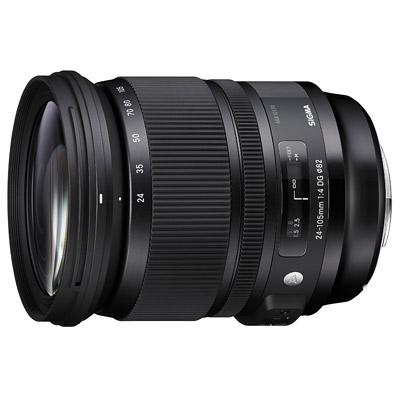 | Sigma 24-105mm f/4 DG OS HSM Art Pros: f/4 constant, stabilized, sharp in the center even at TA, fantastic focal range Cons: Very good for (almost) every type of shot, it comes kit by itself and you can no longer remove it from the camera, the other optics are likely to mold in the closet. Opinion: I use it with adapter on the R6, I preferred it to the original Canon EF L for price (compared to mk.2), build quality and optics (compared to mk.1). I'm very happy, it works very well and is a perfect all-rounder thanks to the wide range of focal lengths covered from wide to medium telephoto. Always very sharp in the center, on the sides it reaches its maximum by closing the diaphragm of a stop. Recommended (on ml!) without reservations. sent on September 08, 2022 |
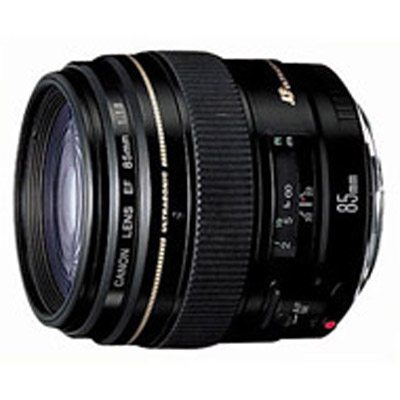 | Canon EF 85mm f/1.8 USM Pros: Lightweight, compact, bright Cons: Suffers from backlight, uncomfortable hood Opinion: This lens has just turned thirty... And if it is produced there will still be a reason. Excellent for portraits, blurred not incredible but in the face of the advantages (used cheaply and is available in large quantities, compact, sharp already at TA, quite light and bright the right) is not even a defect. Used both on FF and APSC I immediately liked, even if on the reduced sensor it is unsuitable indoors ... except for really large rooms. The hood has already been widely (and rightly) denigrated, I add that in backlight or TA has repeatedly wrong focus, even on R6 - fault of my specimen?. Given the age of the lens attention on the used, they all cost the same but you risk going fishing for the extra-old specimen. sent on August 30, 2022 |
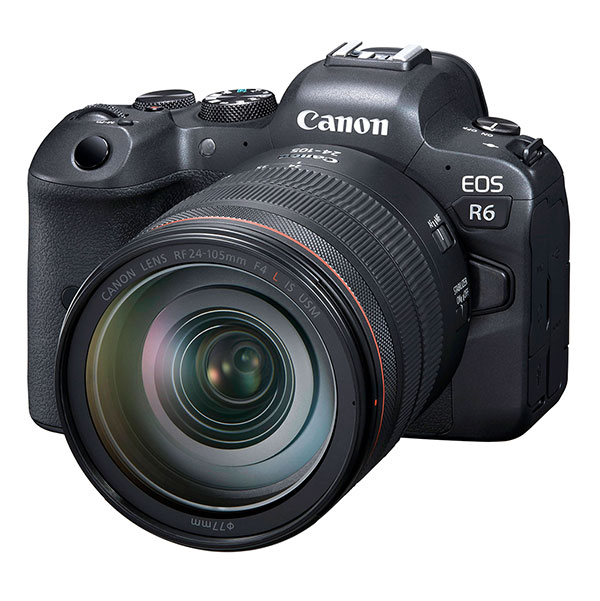 | Canon EOS R6 Pros: Af, dynamic range, three rings, almost fully customizable controls, bursts, joystick, stabilized sensor, dual sd card, buffer, silentness and operating speeds Cons: RF optics with a truly absurd price, system closed to third-party optics. Opinion: Ultimate machine. dynamic range at the level of the best competition, monstrous AF that does not fear any of the three selectable bursts (indeed 4, considering the electronic shutter) and no subject, very quiet mechanical shutter, excellent EVF, three rings, joystick + touch screen both to move in the menus and to move the AF point. the buffer is huge, I bought two normal sd Sandisk extreme (not pro!) and I never had problems slowing down the burst or full buffer. It is the first Canon camera that I own with the autoISO mode working even with the flash attached (in the others it was placed at 400 regardless). But it's also my first fullframe... I don't know if it was a feature that was already present in the past. Coming from old SLR (7D) and ml (M5) the jump is epochal, even with difficult subjects the amount of shots in focus is very high. Recommended without reservation, but have the patience to wait for the combination cashback + online discount from retailers, in this way the savings are really substantial and you find yourself with a new car with warranty Italy at a price lower than what is asked for the used. The "only" 20 mpx are in my opinion a bit 'a false problem, if you do not really need megapixellate, it changes very little from the canonical 24mpx and thanks to the excellent AF on the whole frame actually does not cut out (almost) never. A couple of notes: the screen is the usual Canon flip-up once "opened" on the side of the camera with excellent touch; I would have preferred that only tilt of M3 and M5, shooting cockpit was of a unique comfort. The grip is not very high, I used a smallrig base to increase the height of the camera by that centimeter to always have a support for the little finger. A note on the electronic viewfinder: I read in this forum some interventions that describe it as poor or just sufficient ... I don't doubt that there are better sights, but personally he has never limited me in any way, not even in birdlife. The biggest flaw of this camera are unfortunately the RF optics... the system is closed to third-party manufacturers, the original Canon cost an arm and a leg and when (relatively!) cheap they are either very dark or with STM engine, slow. Fortunately, SLR lenses work perfectly (not all, consult the lists of lenses compatible with the R system that each manufacturer has drawn up!) and can save literally thousands of euros. Absolutely recommended for those who already have Canon lenses at home, those who have to start from scratch also carefully evaluate brands (see Sony) that thanks to third parties can offer a much more complete catalog for prices and performance. sent on June 28, 2022 |
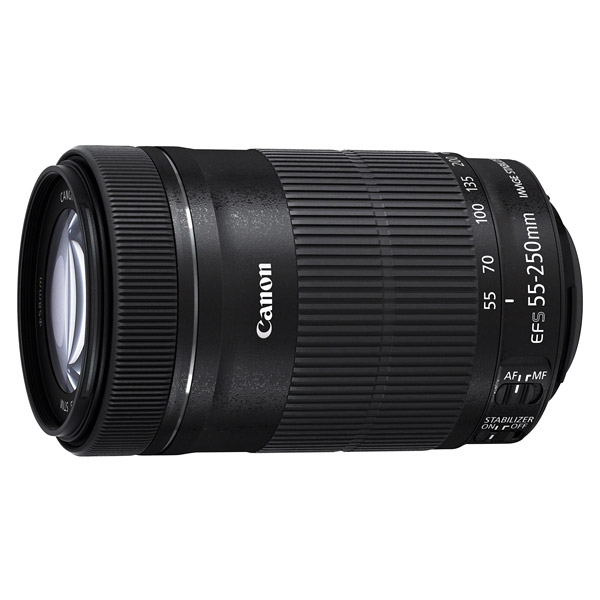 | Canon EF-S 55-250mm f/4-5.6 IS STM Pros: range, quietness, sharpness, lightness, dimensions, price, stabilizer Cons: for the price none. Opinion: excellent economic zoom, stabilized, very light and compact, precise and completely silent af. Well sharp up to 200mm, over shows a bit the side. Defects? the construction is plastic, the af is not very fast (stm) and above all it does not have a limiter to make it work only at certain focal lengths, as diaphragms you soon get to f / 5.6 ... but they are all obvious implications of the medal for such a price. For me they are not even considered as such. Recommended optics without reservations. sent on September 20, 2021 |
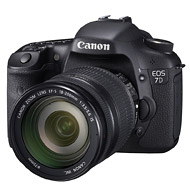 | Canon 7D Pros: pro body, burst, AF, viewfinder, joystick, first Canon SLR with auto ISO in M working Cons: sensor inevitably outdated, no articulated screen & touch, live view contrast pre Dual Pixel, no exposure compensation with auto ISO in M. Opinion: Does it make sense to buy a 7d in 2021? I switched to this old woman after trying the newcomer Sigma 150-600mm C on the M5: excellent machine in general, it is unsuitable for fast shots in which to seize the fleeting moment, a bit because of the viewfinder (not bad in itself, but the blackout is quite long with moving subjects) but mainly for the continuous af absolutely unreliable and inconsistent regardless of the mounted optics. The 7d attracted me with the ridiculous price, the pro body (both as controls / grip and as quality of materials) and an autofocus that, although not at the pace of the last ml, seemed to be more than enough for my needs. I immediately put my hands forward saying that in these characteristics the 7D does not disappoint: it is true, it lacks the tilt and touch screen of the descendants, but even with only the physical controls (including the excellent joystick) this body is comfortable and the response is always ready. The ovf is huge and a pleasure to use, the burst fast and "substantial" (about 20-24 raw at 8 shots per second, with a modern cf) and flanked by an af able to do it justice, even if every now and then there is some shot mysteriously out of focus. Unfortunately, after trying this camera returning to the M5 is really difficult, what previously seemed to me a great body now in comparison is little more than a toy for quality of materials and many details (shutter noise, main ring of the M for me indecent, as written reactivity, grip, battery life,...) small taken alone, but that all together for me weigh a lot on the experience of use. They weigh so much that I decided to continue using the 7d by turning a blind eye to the poor 18mpx sensor, which for giddì and noise can not compete with its younger descendants. a note on the subject: while for the dynamic range nothing can be done, for the noise are now available denoise softwares based on AI that I do not say fill the gap with recent sensors, but that guarantee a huge boost to the quality of the images, practically solving the problem of noise related to high ISO. Even the dreaded banding can be treated effectively with RawTherapee, even if the carefree shadow recoveries to which we have become accustomed in recent years remain impossible. So, back to the initial question... recommended or not? Compromises are there and they are important. But knowing them and seeing the ridiculous price of this old pro (about 250 euros), in my opinion you will hardly be disappointed. sent on August 14, 2021 |
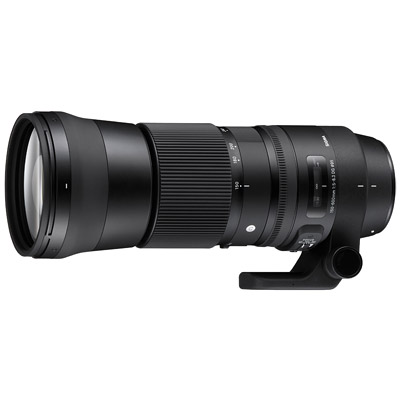 | Sigma 150-600mm f/5-6.3 DG OS HSM C Pros: price, weight, quality, stabilizer Cons: non-push-pull zoom. Opinion: I use it on Canon M5 and 7d. on both it works perfectly, although for a matter of weight and performance of the continuous af it is much more comfortable on the SLR, despite the more aged sensor. It's my first super tele, so I can't compare it with the competition, but it's a well-built lens, pleasant to hold in your hand, closed with a sharp stop, the af is very fast (especially if you use the limiter) and the stabilization effective. defects? at this price no one (do you want a bright 600mm? you have wrong price range ...), but to be honest on some occasions the blurred is really tremendous, and the zoom push pull would have been very convenient ... although I use it so anyway, pushing on the truncated cone "behind" the front lens. Update: Since I bought it I have never been able to make freehand shots perfectly in focus, the weight and length of this beast make it impossible for me to wield without swinging from all sides. A few days ago I finally solved with a monopede. I do not report it in the defects, I do not think it can be considered as such. sent on August 02, 2021 |
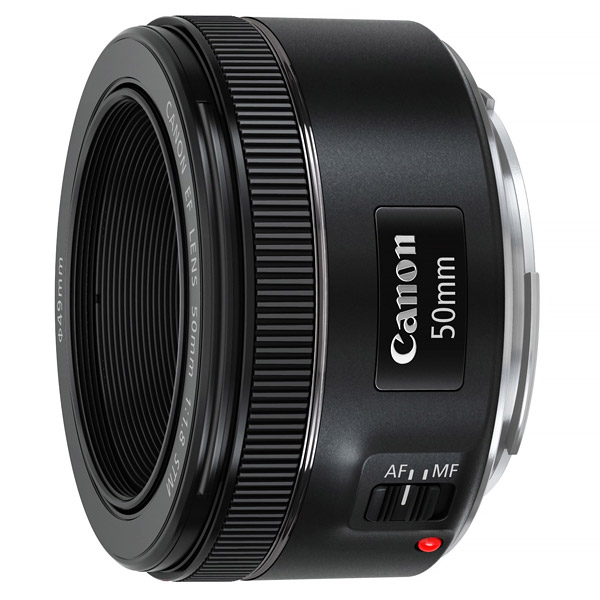 | Canon EF 50mm f/1.8 STM Pros: usable to t.a., very sharp from f/2.8, price, colors Cons: af slow Opinion: on apsc, excellent portrait lens. the blurry will not be the best but it costs a whistle, closed 1 stop becomes a blade, the colors are beautiful, cluttered little, weighs little and also has the metal bayonet. on mirrorless (M5) the af is not wrong but it is certainly not lightning. obligatory purchase. sold once, I regretted it quickly, I just bought it back. sent on April 17, 2021 |
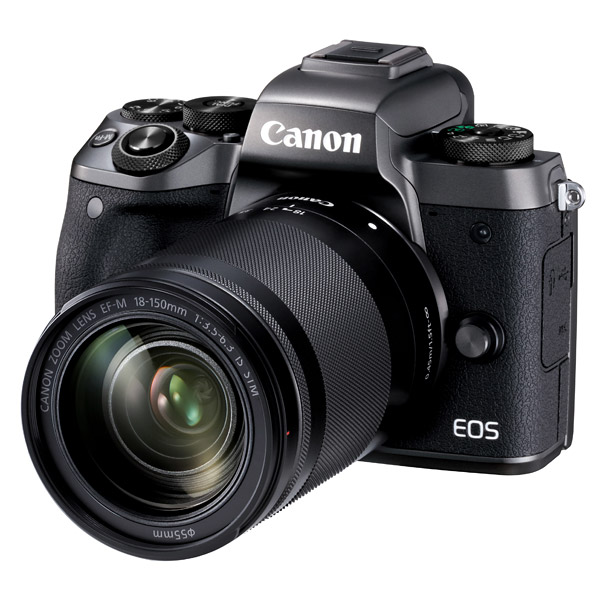 | Canon EOS M5 Pros: - Cons: - Opinion: PRO: - many physical controls (4 rings!) almost fully customizable - the same good 24mpx "second version" sensor of the various M50, 200D, 800D, 77D and 80D - fast and precise dual pixel AF - very fast burst (7 shots/second with afc) and "huge" buffer (17 raw) for non-specialist uses - very small weight and size, wanting more ergonomics resolves with a smallrig cage (it almost becomes a reflex, as a handle) - very comfortable touch screen in general, and well used as a joystick replacement to move the AF point even in viewfinder - perfectly compatible with efs/ef optics thanks to the adapter. CONS: - the ring around the shutter button for me is uncomfortable, nothing to do with that of the SLRs - AF not particularly lent in low light (comes "only" to -1EV): in such a condition the continuous af becomes unreliable, sometimes it goes hunting and even when it does not happen the machine could "refuse" to shoot for a couple of seconds after pressing the shutter button. It is as if he is still processing something despite the fact that there is confirmation of the focus on the screen. The strange thing (equal behavior in the M3) is that in a single the problem is very mitigated, the machine sets in focus and shoots in not excessive times (I repeat, only in very dark environments... I took pictures in church for a baptism, I was afraid of problems with the AFC and instead it never had any uncertainties) - there is no eye af (available on newer versions of the dual pixel) - poor battery life sent on October 08, 2020 |
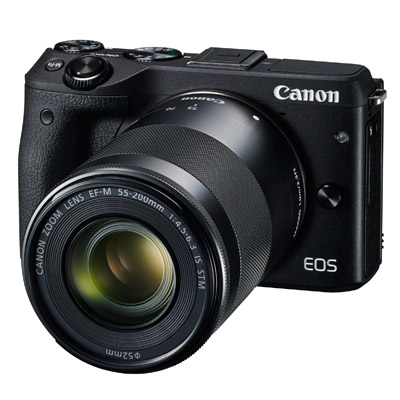 | Canon EOS M3 Pros: construction, many buttons and three rings, customizable, intuitive menu, touch screen and tilting on the vertical, usable flash of bounce, compactness, hot shoe. Cons: battery life, unusable contrast af on moving subjects, "old" 24mpx sensor that does not allow the recoveries of the successor. Opinion: bought used in the store for less than 200 euros (the average price requested at the moment is absurd, in my opinion), I use it as a compact combination with compact and light optics. I knew about inadequate contrast af for moving subjects, so I didn't have any nasty surprises. In afc (to servos) it happens that the machine becomes impudent and does not shoot for several seconds, while in afs (one shot) the same scene shoots almost without delay ... mystery of faith and in any case the continuous af continuo on this body is as useless written. For the rest I am happy, the camera is pleasant to hold in your hand and to use, three rings (one for exposure compensation) are perfect to always have everything at hand, and the buttons are almost all customizable. The sensor is the first Canon 24mpx, therefore with a reduced dynamic range compared to the second version. Better also not to rely on the recoveries of shadows, they become noisy; it must be said that always having on screen the preview of the exhibition and the histogram is definitely easier to expose to the best. Obviously it is outdated to date, but I still consider it a good purchase for photos of static subjects and for those who already have Canon optics. sent on August 17, 2020 |
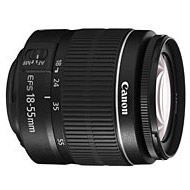 | Canon EF-S 18-55mm f/3.5-5.6 III Pros: The 200D in kit with this lens I paid less than to buy the body alone, so... Cons: ... it sucks so much that it devalues everything it touches. unsteadyed, slow and noisy, plastic as a toy, poor sharpness. Opinion: Unlike the brothers IS and STM (the latter really great kits, as far as I'm concerned), this lens is a bottle bottom. found in the packaging of the 200D, just tried I wondered why I had spent money to go from 1" (Sony RX100) to apsc if then the result was even worse. buying at the lenses I realized that the problem was neither the sensor nor the camera, but this junk. sent on August 02, 2020 |
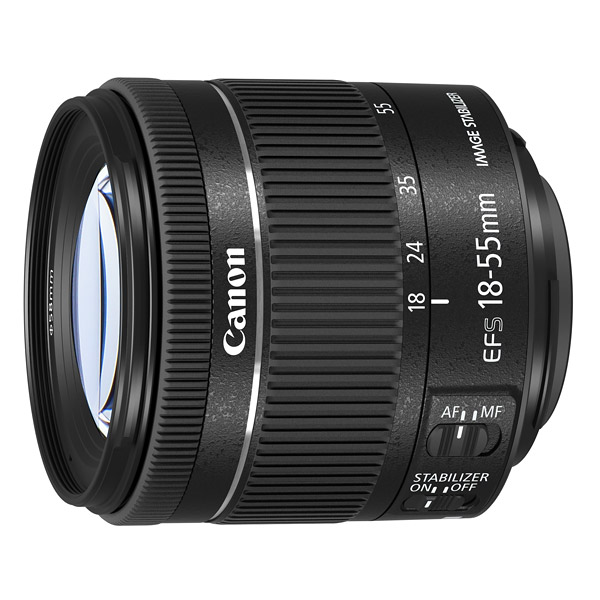 | Canon EF-S 18-55mm f/4-5.6 IS STM Pros: more compact and better made than its predecessors, very light, stabilized, excellent range of focal points, sharp, af silent Cons: for what it costs nothing. To have to indicate one, it is obviously a dark goal... Opinion: ... but if it had been f/2.8 constant it would have had the same weight, the same footprint and the same price as 17-55mm is usm. Compared to its predecessors it loses 1/3 wide-side brightness stops, but gains in portability being also a 20% shorter. Obviously unsuitable for obtaining "blurring", for landscapes and fixed subjects I consider it a small gem thanks to good sharpness and stabilization. The autofocus is totally silent. For what it costs (used) I can only recommend it. sent on July 27, 2020 |
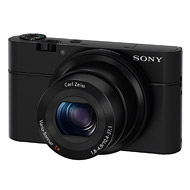 | Sony RX100 Pros: Hardware masterpiece... Cons: ... ruined partially by absurd software choices Opinion: I've had this camera for four years now, and the more I use it the more I'm angry at Sony's commitment to make it uncomfortable to use. The sensor for a really pocket compact is big, the yield in general excellent, the lens a good all-rounder (some combinations focal/diaphragm are not much and the canvas side is not very bright, but for 300 euros...). The usable bounce flash is an amazing plus in the interior, iso side you get photos more than decent up to iso1600... besides they will not be fine art, but if there is something to photograph at all costs the photo will still be searchable :) The flaws... The ISO car is there, but you can't use it in manual (but why? because it's called manual?), you can't set a minimum shooting speed in semi/full car modes, resulting in the camera prioritizing to keep the iso low will start with ridiculously long, unmanageable freehand speeds even with the (poor) stabilization. Fortunately the crop factor is so high (2.7x) that in priority mode S times almost never run the risk of having subjects or portions of them not covered by the pdc. The bracketing in the room exists but it is ridiculous (maximum scissors -0.7 -0.7EV, in practice better to do it calmly in manual). The Af is all but lightning, but still, given the age of the camera you can't complain... I certainly don't use it in eventful situations (or at least I can't use it). Almost all defects that can be solved quietly with a firmware update... but better of course force you to buy an mk3 for the ISO car in manual, or a mk4 for the minimum shooting time. Too bad, also because the yield of the later versions, photo side, does not seem exponentially greater as it happens instead to the price. sent on October 31, 2019 |
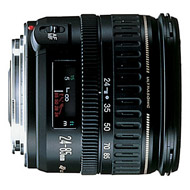 | Canon EF 24-85mm f/3.5-4.5 USM Pros: range, sharpness, usm, weight and footprint, price Cons: unstabilized Opinion: Zoom all-rounder bought a little to try given the ridiculous price at which it is used (100euros shipped, in my case). I use it on apsc to flank my fixers in situations where I can't move freely. the equivalent range of FF focals on apsc is about 38-140mm; compared to use on FF you lose a lot wide-angle side, but as far as I'm concerned on occasions when I need a wide angle I use calmly the samyang 14mm; I find it much more comfortable to have the good maximum opening (f/3.5) on a multipurpose focal like the 24mm. The photos are crisp and the colors beautiful, the raw (using lightroom) have very little contrast compared to my other newer lenses (all stm), which is returning me very comfortable when I have to process shots in problematic light situation. For the rest... it is a light and well-built zoom, the af usm is quiet and lightning- it costs a whistle, I consider it a great compromise between brightness and weight/clutter. If it had been stabilised, it would have been a masterpiece, but for the 100 degrees it is today, I don't think we can ask for more. Recommended. sent on October 17, 2019 |
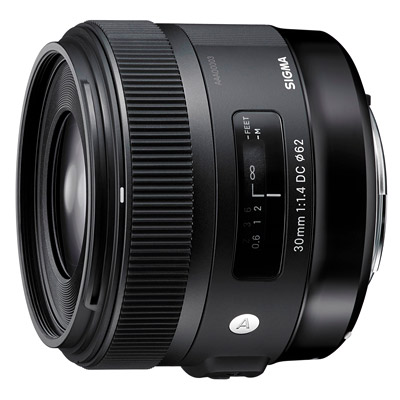 | Sigma 30mm f/1.4 DC Art Pros: Autofocus fast, usable at full opening and very sharp as soon as you close a little the diaphragm, brightness, colors, accessories (padded bag and lampshade), excellent construction... Cons: ... but that also means heavy target, (on Canon) AF to be calibrated with usb dock. The noise of the AF is heard a lot in the videos. Opinion: The angle of view is a 50mm equivalent, but thanks to the lower real focal length you have a little more margin in handling the pdc ad f/1.4. Bright, great blurry and colors. As written by others, ta is not very sharp, vignette and there is a lot purple fringing even in situations of contrast not so extreme - while remaining perfectly usable, for me. sent on May 17, 2019 |
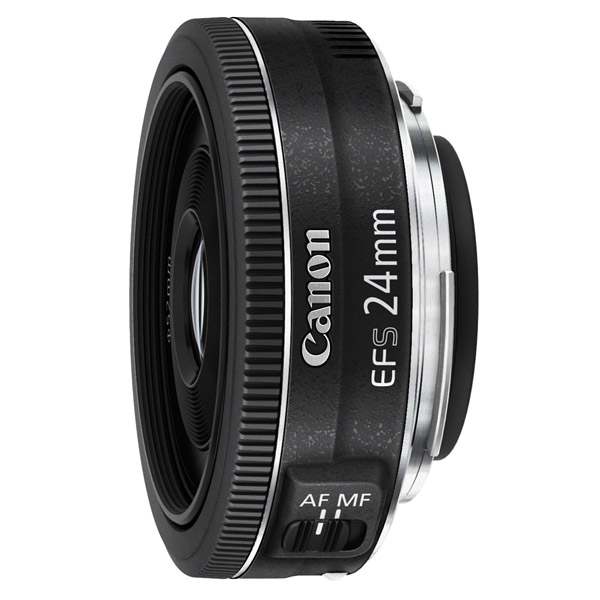 | Canon EF-S 24mm f/2.8 STM Pros: Size, sharpness, price Cons: Nobody. Opinion: My first fixed goal; Despite my qualms, it almost perfectly replaces the classic all-rounder zoom... obviously as long as you have the opportunity to get away/approach the subject and you are willing to walk. Giving up extreme diaphragm openings and stabilization, with 150 euros you bring home a sharp lens already at f/2.8, compact and light. The non-original metallic lampshade (with filter thread) is found online at ridiculous prices. Cartoon at TA, but I like it (and it resolves in PP). Paired with the EF 50mm f/1.8 STM, if you don't need wide angles and extreme canvases, you have 99% of the photographs with 250 euros of spending. Very recommended. sent on April 18, 2019 |
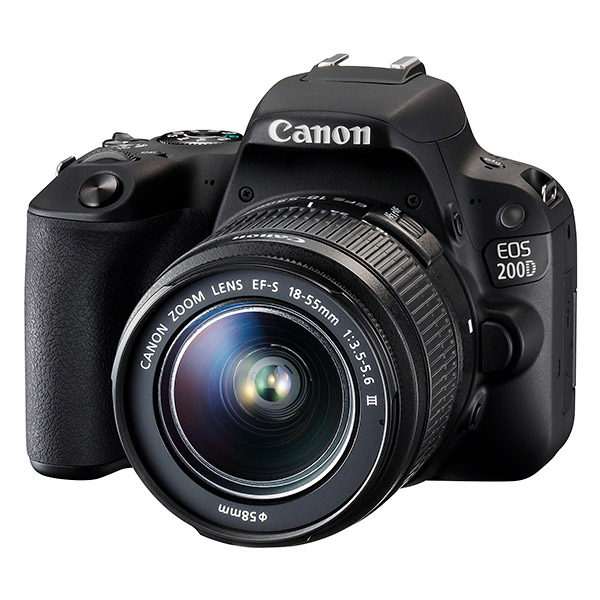 | Canon 200D Pros: Small size and weight while with comfortable grip; comfortable and highly defined tipper touch screen; sensor close to the competition; dual pixels. Cons: In diaphragm priority, often too long a time that leads to moves. Opinion: I'm going to be an amateur photographer at the first dslr, coming from an RX100 thanks to which I learned the basics of photography. I tried to inform myself as much as possible, before deciding which machine (and at the same time which system) to bet on. The choice fell on the 200D because: 1) it has a decent portability, as far as possible in the reflex field. 2) the 24mpx sensor is comparable to the competition (photonstophotos, comparison with Nikon D5600 and Sony A6500: http://www.photonstophotos.net/Charts/PDR.htm#Canon%20EOS%20200D,Nikon%20D5600,Sony%20ILCE-6500) and is the same as the older APSC sisters; in post-production, important recoveries of underexposed shots are possible. 3) the double autofocus system seems to me balanced for the price range, with "decent" lighting the 9 points via OVF (cross center) work properly; for more critical situations I resort to the Dual Pixel via Live View. For portraits, there is the face detection function. 4) Canon offers objectives, see STM, excellent for my needs, for quality, price and size, not to mention the vast array of EF and EFS already present both new and used. 5) the controls are well disposed and quick to implement; the single ring combination + service buttons (the ISO button, the Q button that can be used for exposure compensation and the Av button whose function varies from mode to mode) will not be as efficient as the multiple rings but at the same time does not make me feel limited and allows me to adjust everything without taking my eye off the viewfinder. Negative notes? the grip sometimes a little creaky when combined with heavy targetss (plastic fault), and the priority mode of unusable diaphragms: the machine, often and willingly, resorts to too long times with consequent photos moved to be binned. Fortunately, the M + auto ISO mode solves every problem: you set times and iris opening depending on the type of photo, if necessary you set an exposure compensation and leave the optimal ISO value to the cold calculations of the machine... you can still change it with the dedicated button. The touch screen "remembers" the last item selected before turning off; selecting the exposure compensation, the Q button (in addition to activating the screen) becomes a quick button for selecting the same, which can then be varied with the usual wheel. sent on November 12, 2018 |
 JuzaPhoto contains affiliate links from Amazon and Ebay and JuzaPhoto earn a commission in case of purchase through affiliate links.
JuzaPhoto contains affiliate links from Amazon and Ebay and JuzaPhoto earn a commission in case of purchase through affiliate links.May Beauty Be Everywhere Around Me